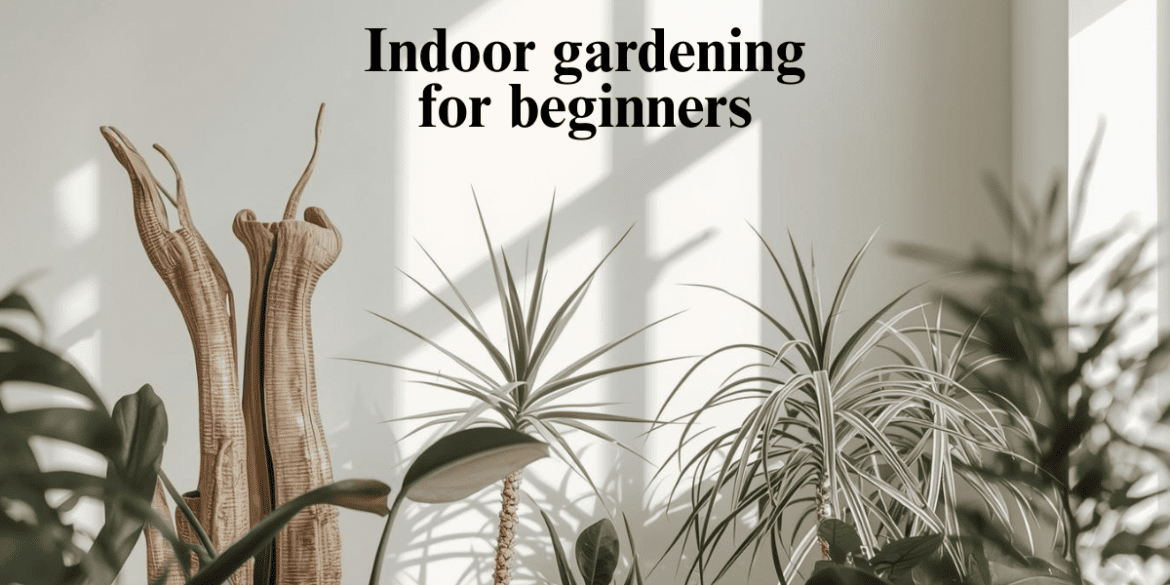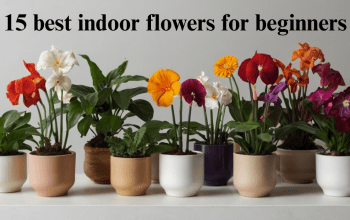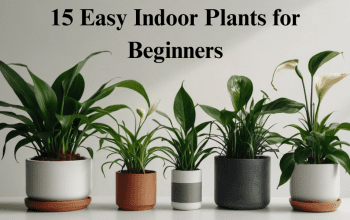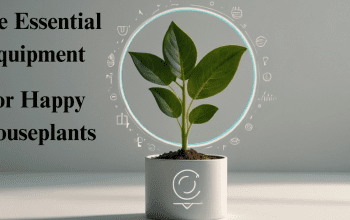Ever looked at a friend’s home and thought, “Wow… how do they make their place look like a Pinterest board with all those plants?” Meanwhile, your poor basil plant from last summer is still haunting you in the corner, dried up like it just went through a desert apocalypse. Don’t worry—you’re not alone. Starting an indoor garden can feel intimidating at first, especially if your “green thumb” has historically leaned more toward “brown.”
But here’s the good news: indoor gardening isn’t just for plant gurus or people who somehow know the difference between peat moss and perlite (don’t stress, we’ll cover that later). It’s actually one of the easiest, most rewarding hobbies you can bring into your home. Whether you live in a tiny apartment with zero outdoor space, or a big house that could use a splash of life, creating your own little indoor jungle is totally possible—and honestly, pretty fun.
And the best part? Indoor gardening isn’t only about pretty aesthetics. Sure, your Instagram feed will thank you, but there’s more to it than likes and double-taps. Plants can reduce stress, purify the air, boost creativity, and even provide you with fresh herbs or veggies right from your windowsill. Imagine cooking dinner and snipping basil or mint straight from your kitchen garden—suddenly you feel like a chef in a fancy cooking show.
In this guide, we’ll break down indoor gardening for beginners step by step. From the benefits and best beginner-friendly ideas, to tips, tricks, and mistakes to avoid, you’ll walk away ready to grow your own thriving indoor oasis—even if your last plant “mysteriously didn’t make it.”
What is Indoor Gardening?
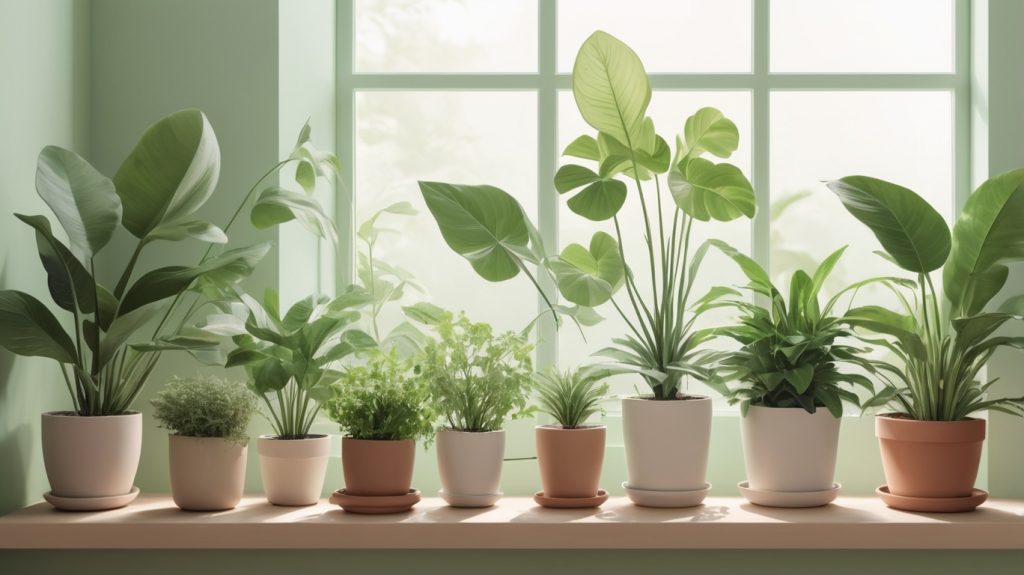
At its core, indoor gardening is exactly what it sounds like—growing plants inside your home instead of outdoors. But it’s not just about plopping a random plant on your windowsill and hoping for the best (though we’ve all done that). Indoor gardening is the art of creating a thriving little green world within your walls, where plants can grow happily despite being away from the traditional garden space.
Unlike outdoor gardening, where plants get plenty of natural sunlight, rain, and space to spread their roots, indoor gardening requires a bit more intentional care. You become the “weather system” for your plants—deciding how much light, water, and nutrients they receive. The great news is, you don’t need acres of land or a green thumb to make it work. With the right knowledge (which we’re about to cover), anyone can succeed.
Indoor gardening can take many forms: a few pots of herbs in your kitchen, leafy tropical plants brightening up your living room, a shelf of succulents, or even a high-tech hydroponic setup. Whether your goal is fresh food, cleaner air, or simply a cozy vibe, indoor gardening is about bringing nature closer to you—literally within arm’s reach. 🌿
Health Benefits of Indoor Gardening
One of the coolest things about indoor gardening is that it isn’t just easy on the eyes—it’s actually good for your body too. That little pothos hanging in your window or the aloe vera sitting on your kitchen counter is doing way more than just “looking cute.” Let’s break down some of the science-backed health benefits you get when you surround yourself with plants indoors.
Cleaner, Fresher Air 🌬️
Remember learning in school that plants take in carbon dioxide and release oxygen? Turns out, that wasn’t just a throwaway science fact—it’s the real deal. Indoor plants act like natural air filters. They can absorb harmful toxins floating around from cleaning products, paints, and even furniture (yes, your couch might be guilty). Plants like peace lilies, snake plants, and spider plants are especially famous for freshening up indoor air. Think of them as your home’s quiet little air purifiers that don’t need electricity.
Boosted Immunity 💪
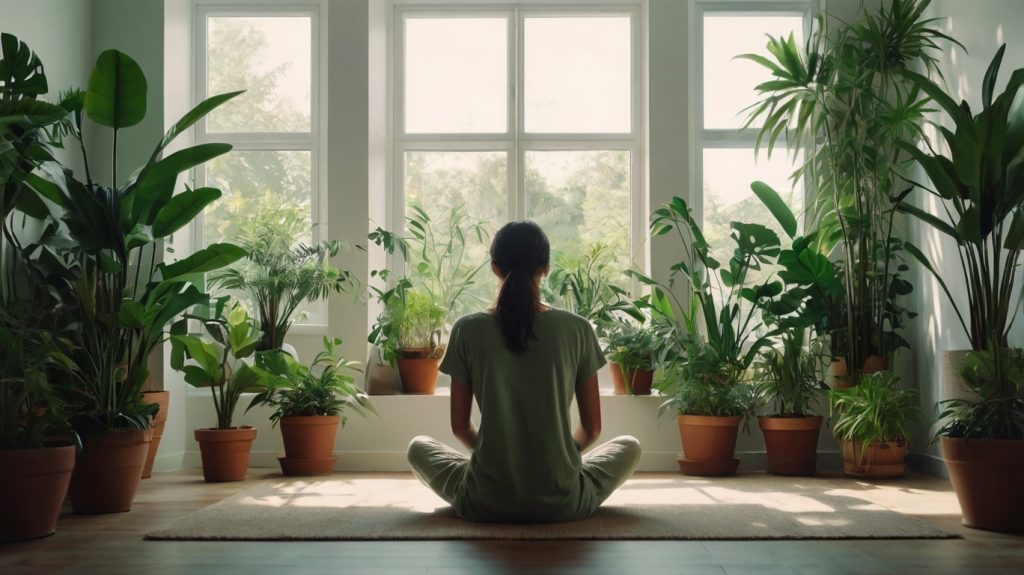
Here’s something you might not expect: spending time around plants can actually strengthen your immune system. When you nurture your indoor garden, you’re not just watering leaves—you’re interacting with nature in a way that lowers stress hormones. And since stress weakens immunity, lowering it means your body gets stronger at fighting off everyday bugs and colds. Pretty wild, right?
Better Breathing & Humidity Balance 🌱
Dry air can cause everything from sore throats to itchy skin (hello, winter blues). Luckily, indoor plants release moisture through a process called transpiration—basically, they “breathe out” water vapor, which helps add humidity back into the room. This can make breathing easier, keep your sinuses happy, and even improve sleep quality.
Faster Healing & Recovery 🩹
Believe it or not, studies show that patients who keep plants in their rooms recover faster and need less medication. That’s because plants create a calming environment, reduce blood pressure, and promote relaxation—all of which help the body heal more efficiently.
So, while your indoor garden may look like a stylish décor choice, it’s secretly acting like a mini wellness system, keeping your air clean, your immune system stronger, and your body just a little bit healthier every day.
Mental Benefits of Indoor Gardening
If you’ve ever felt an instant wave of calm just by walking into a plant-filled room, you’re not imagining it. Indoor gardening is like therapy—only cheaper, greener, and you don’t have to book an appointment. Beyond making your home look gorgeous, your plants are working some serious magic on your mind and emotions. Let’s unpack the mental perks.
Stress Relief & Relaxation 🧘♂️
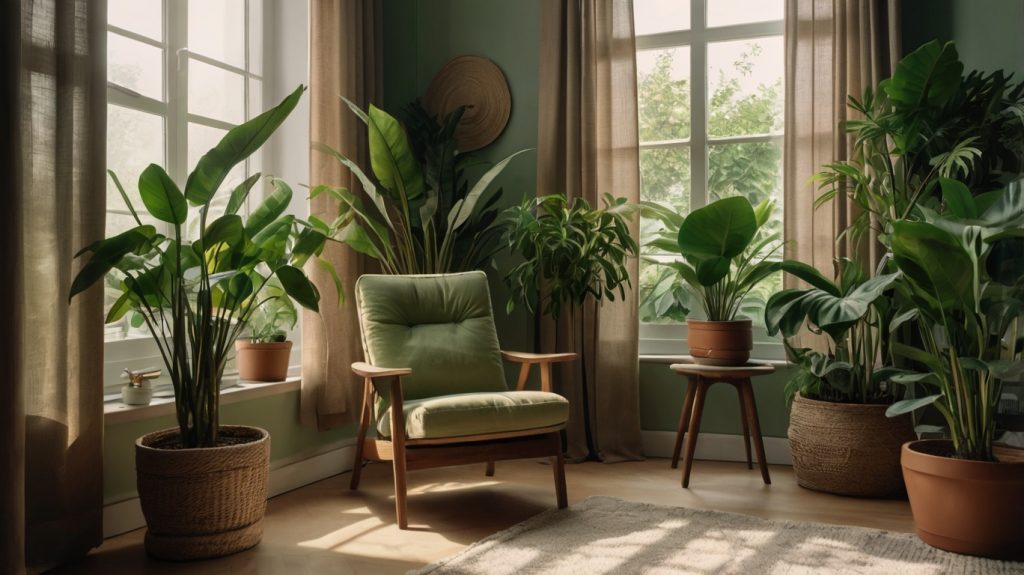
There’s something oddly soothing about tending to plants. Watering, pruning, or just checking on your little green buddies can slow down a racing mind. Studies even show that simply looking at greenery lowers cortisol—the stress hormone that keeps us on edge. Translation? A few minutes with your plants can feel like a mini mental spa session.
Boosted Productivity & Creativity 💡
Ever notice how some of the coolest offices have plants everywhere? That’s not just a design trend—it’s psychology at work. Indoor plants have been shown to improve concentration, memory, and creativity. Having greenery on your desk or near your workspace can keep you more focused and inspired. So if you’re struggling with that project or creative block, maybe it’s not coffee you need—it’s a potted fern.
Happiness & Mood Lifting 🌸
Plants have this uncanny ability to make people feel… well, happier. It’s not just the fresh air; it’s the sense of accomplishment that comes from keeping something alive and thriving. Watching a new leaf unfurl or harvesting your first homegrown herb gives you a subtle dopamine hit—like nature’s version of a “good job” sticker. And honestly, who doesn’t need a few more of those?
A Sense of Connection 🌍
In our super tech-driven, always-online world, indoor gardening brings a refreshing sense of connection—to nature, to yourself, and even to a slower pace of life. Caring for plants reminds you that growth takes time, patience, and consistency—pretty solid life lessons if you ask me.
So, the next time someone asks why you’re turning your living room into a mini jungle, you can confidently say, “It’s for my mental health.” And you won’t even be lying. 🌿
Environmental Benefits of Indoor Gardening
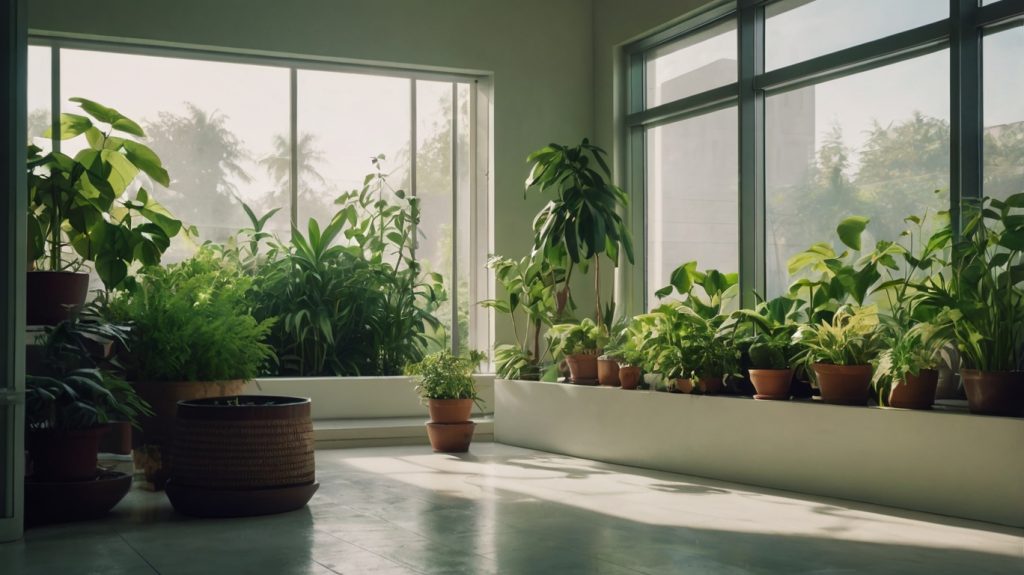
When you think about gardening, you probably imagine wide-open backyards or sprawling farms, right? But here’s the thing—your indoor garden, no matter how small, is also making a positive impact on the environment. Yup, that little pothos climbing your bookshelf is doing more for the planet than you might think.
Bringing Green Spaces Indoors 🌿
Cities today are concrete jungles—lots of buildings, not enough nature. Indoor gardening helps bridge that gap by bringing a slice of green right into your living space. Every leafy corner, every hanging basket, every herb pot adds to the greenery we’re missing outside. Green spaces indoors don’t just look nice; they also balance out the artificial feel of modern living, making our homes and apartments feel more alive and less like sterile boxes.
Promoting Sustainable Living 🌍
Growing your own herbs, vegetables, or fruits indoors—even in small amounts—reduces the need for store-bought produce that’s often shipped from miles away. That means fewer plastic bags, less transport pollution, and fresher food for you. Think about it: snipping basil from your windowsill instead of buying a plastic-wrapped bunch at the grocery store is a small act, but multiply that by thousands of people doing the same and it makes a real difference.
Energy & Climate Balance 🌱
Here’s a bonus you might not know: indoor plants can actually help regulate indoor temperature and humidity. By releasing moisture into the air, they reduce the need for humidifiers in dry seasons. Plus, leafy plants can act as natural insulators, keeping your home cooler in summer and cozier in winter.
So yes, while you might start indoor gardening for fun or relaxation, you’re also quietly joining the movement toward a greener, more sustainable lifestyle. It’s a win-win—you get a happier home, and the Earth gets a tiny but meaningful boost.
Indoor Gardening Ideas
Indoor gardening isn’t one-size-fits-all. Whether you’ve got a tiny apartment, a bustling family kitchen, or just a corner of your living room begging for some life, there’s a style of indoor gardening for you. Let’s explore a few beginner-friendly ideas that fit different spaces and vibes.
Small Apartment-Friendly Ideas
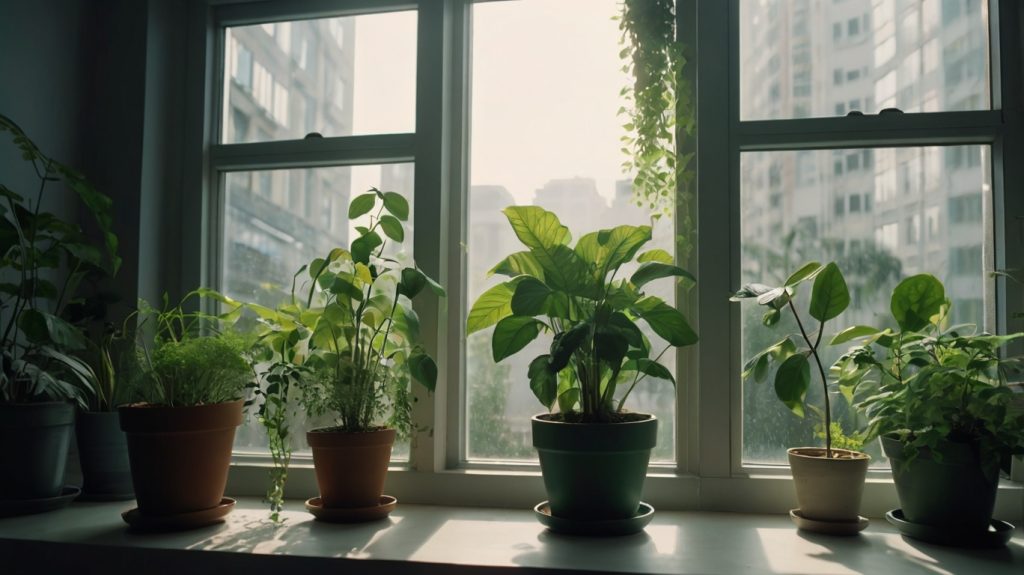
Living in a small apartment doesn’t mean you have to give up on gardening dreams. In fact, small spaces can make indoor gardening feel extra cozy and creative. The trick is to think vertical and multi-purpose.
Wall-mounted planters, hanging baskets, or even a ladder shelf can instantly turn unused space into a mini indoor jungle. Got a sunny window? That’s prime real estate for succulents, herbs, or a low-maintenance pothos. No sunny window? No problem—grow lights are compact and affordable, and they’ll keep your plants happy even in the darkest corners.
Another hack for apartment dwellers: choose plants that pull double duty. For example, aloe vera looks pretty but also doubles as a natural skin soother. Herbs like mint and basil not only smell amazing but also spice up your cooking. With the right choices, even a studio apartment can feel like it’s bursting with green life.
The best part? Caring for plants in small spaces creates an intimate vibe—you’ll literally be face-to-leaf with your little garden every day, which makes bonding with your plants that much easier.
Kitchen Herb Gardens
If there’s one type of indoor gardening that makes you feel instantly fancy, it’s a kitchen herb garden. Imagine making pasta and casually snipping fresh basil from your windowsill. Chef’s kiss. 🌿
The kitchen is one of the most practical spots for indoor gardening because herbs thrive in small pots, don’t need much space, and love sunny windows. Common choices include basil, parsley, thyme, rosemary, and mint. If your kitchen doesn’t get a ton of light, you can always use a small LED grow light—it won’t hog counter space and keeps your herbs thriving year-round.
One fun way to set up your herb garden is to use mason jars, tin cans, or even hanging spice racks. This keeps things compact while adding a rustic charm to your kitchen décor. If you’re a tea lover, try growing mint or chamomile—your evening tea will never be the same again.
The biggest tip here? Snip your herbs often! Regular trimming encourages more growth, so don’t feel bad about using them in your cooking. The more you eat, the more they give back. Indoor gardening that actually feeds you? That’s a win-win.
Decorative Plant Displays
Let’s be honest—sometimes indoor gardening is less about practicality and more about aesthetic goals. Decorative plant displays can completely transform the vibe of a room.
For starters, large statement plants like fiddle-leaf figs or monstera deliciosa can act like living sculptures. Place one in the corner of your living room and suddenly the space feels alive and sophisticated. On the smaller side, succulents, cacti, or trailing plants like ivy and string of pearls make perfect desk or shelf companions.
Want to get fancy? Try grouping plants of different heights and textures together. Think of it like styling an outfit—mixing sizes, colors, and “personalities” makes the overall display pop. Adding decorative pots, woven baskets, or plant stands can also help match the greenery to your home’s style.
And here’s a fun bonus: studies suggest that decorative plants don’t just look good, they actually make guests feel more welcome and relaxed in your space. So, if you want your home to give off those cozy, Pinterest-worthy vibes, a decorative plant display is the way to go.
Creative/DIY Indoor Garden Setups
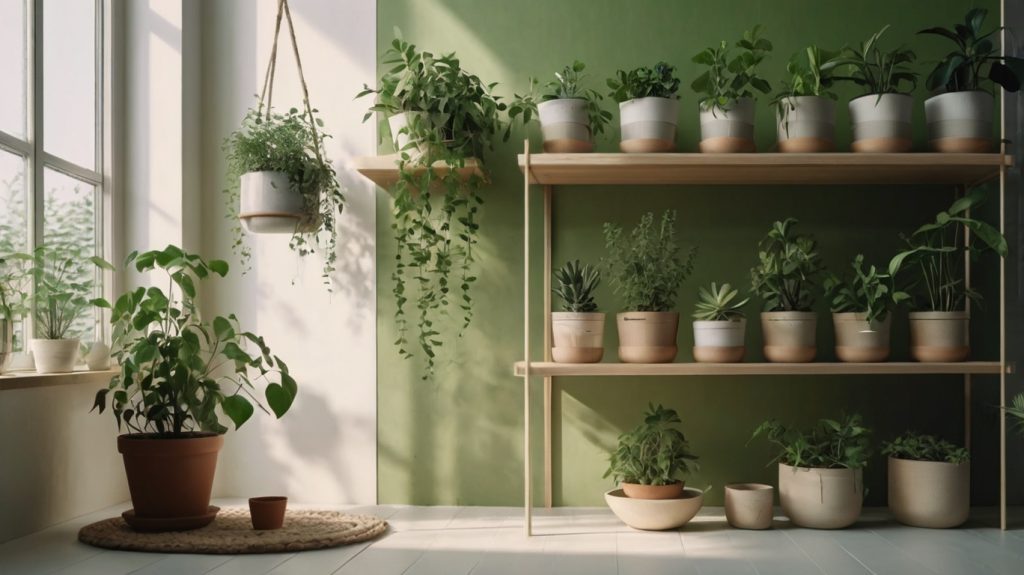
If you love a good DIY project, indoor gardening offers endless opportunities to get creative. Forget boring pots—almost anything can be turned into a planter. Old teapots, wooden crates, glass jars, or even repurposed furniture can be transformed into unique plant homes.
One fun idea is a “living wall,” where you hang a series of small pots or modular planters vertically to create an entire wall of greenery. It’s dramatic, space-saving, and a total conversation starter. Another popular DIY option is terrariums—mini glass gardens filled with succulents, moss, and decorative stones. They’re low-maintenance and look like tiny worlds trapped in a jar.
If you’re feeling extra ambitious, try a small hydroponic system—basically growing plants in water instead of soil. These kits are surprisingly beginner-friendly and let you grow things like lettuce or herbs super efficiently.
DIY gardening is all about personalizing your space. Whether it’s painting your own pots, upcycling containers, or designing quirky arrangements, you’ll end up with a garden that reflects you. Plus, every time someone compliments your setup, you get to say, “Thanks, I made it myself!” which honestly feels just as good as keeping the plants alive.
Tips for Indoor Gardening Beginners
Okay, so you’re excited, you’ve got some ideas brewing, and maybe even a cart full of plants waiting at checkout (we’ve all been there). But before you bring your new green roommates home, let’s go over some essential tips for indoor gardening that will set you up for success.
Choosing the Right Plants
Here’s the thing: not all plants are created equal, and definitely not all plants are beginner-friendly. The last thing you want is to start your indoor gardening journey with a drama queen that wilts at the slightest inconvenience.
If you’re new, stick with the classics: snake plants, pothos, spider plants, succulents, or peace lilies. These guys are basically the “easy-going roommates” of the plant world. They forgive you if you forget to water them for a bit and don’t throw a tantrum if the lighting isn’t perfect. Herbs like basil, mint, and parsley are also great because they grow quickly and reward you with food. Win-win.
The golden rule? Start small. Don’t buy ten plants at once and overwhelm yourself. Get one or two, learn their quirks, and build from there. That way, instead of feeling guilty about a jungle of sad, struggling plants, you’ll feel proud of your thriving little starter family.
Understanding Light & Placement
Light is basically plant food. Without it, your leafy friends can’t photosynthesize (big science word for “make their own lunch”). But here’s the tricky part: every plant has its own lighting needs.
Plants like succulents and cacti love bright, direct sunlight. Put them by a sunny south-facing window, and they’ll be living their best desert life. On the other hand, plants like snake plants and ZZ plants thrive in low light, making them perfect for those darker corners of your home.
Not sure what you’ve got? Here’s a quick hack: check your plant’s leaves. Thick, fleshy leaves usually mean “give me sun,” while darker, thinner leaves often signal “I’m fine in the shade.”
And remember, placement matters! Don’t put plants too close to heaters or air conditioners—they hate drafts more than we do. Rotating your plants every couple of weeks is also a good move; it helps them grow evenly instead of leaning dramatically toward the light like a plant version of the Leaning Tower of Pisa.
Watering & Soil Basics
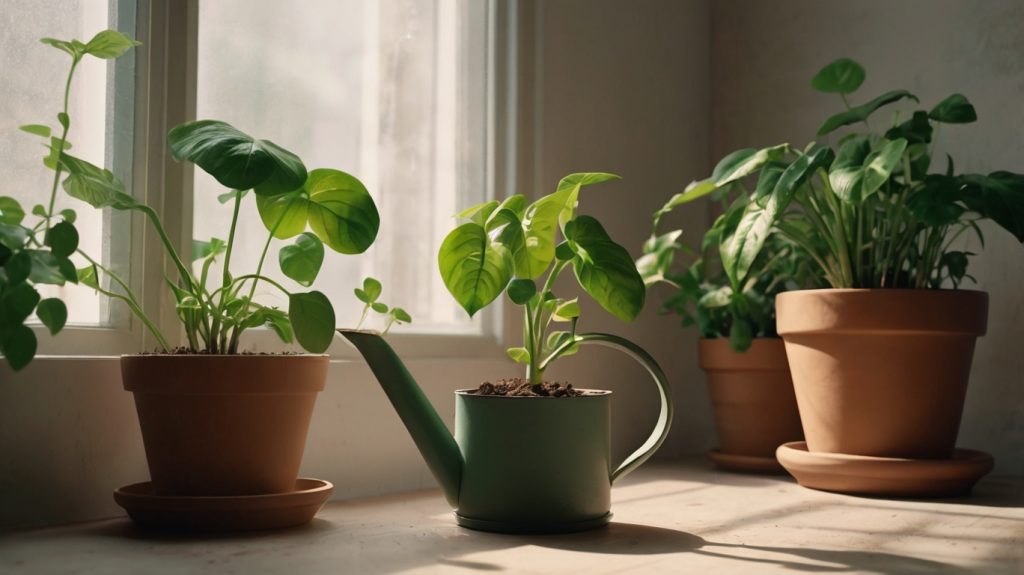
Confession time: overwatering is the number one way beginners kill their plants. (Yes, you can love your plants too much.) The truth is, most indoor plants would rather be a little thirsty than drowning in soggy soil.
A good rule of thumb? Stick your finger about an inch into the soil—if it feels dry, it’s time to water. If it’s still damp, step away from the watering can. Easy.
Soil matters too. Don’t just grab dirt from your backyard—that’s a recipe for bugs and poor drainage. Instead, buy potting mix made for indoor plants. Want to get fancy? Add perlite or sand for better airflow around the roots.
And here’s a pro tip: make sure your pots have drainage holes. Without them, excess water just sits there, rotting the roots like a swampy mess. If your dream pot doesn’t have a hole, use it as a decorative cover and keep your plant in a smaller, drainable pot inside it. Stylish and practical.
Tools & Accessories to Make Life Easier
You don’t need a full gardening shed to get started with indoor plants. But a few simple tools can make your life way easier.
First up: a watering can with a narrow spout. It helps you water the soil without splashing the leaves (most plants don’t like wet leaves). A good pair of pruning scissors is also handy for trimming dead leaves and keeping plants looking sharp.
Other MVPs include a spray bottle for misting humidity-loving plants like ferns, and a moisture meter if you’re never quite sure when to water. (It’s basically a plant lie detector test for soil.)
If you’re feeling extra, grow lights are a game-changer, especially in darker homes. They’re small, affordable, and keep your plants thriving year-round. Oh, and don’t underestimate the power of cute pots and stands. They’re not “essential” in the survival sense, but they’ll make your indoor jungle Instagram-ready—which is basically essential.
Common Indoor Gardening Mistakes to Avoid
Alright, so you’ve got the plants, the pots, and maybe even that fancy watering can that makes you feel like a professional gardener. But before you start imagining yourself as the next “Plantfluencer,” let’s talk about the classic mistakes that send beginner plants straight to plant heaven. The good news? Avoiding them is way easier than you think.
Overwatering vs. Underwatering
If there were a crime drama for plants, the number one suspect in every “plant murder” case would be overwatering. Most beginners assume more water = more love, but in reality, soggy soil suffocates roots and causes rot. It’s basically like giving your plant permanent wet socks.
The trick? Get to know your plant’s rhythm. Most houseplants prefer the “let me dry out a bit” method. Stick your finger in the soil up to the first knuckle—if it feels dry, water. If it feels damp, hold off. Simple, right?
On the flip side, underwatering happens when you forget your plant exists for two weeks straight (hey, it happens). Signs include droopy leaves, crispy edges, or soil pulling away from the sides of the pot. Luckily, underwatering is usually easier to fix—just give your plant a good soak and it’ll often bounce back.
Pro tip: when in doubt, underwater slightly rather than overwater. Plants forgive thirst faster than they forgive drowning. Think of yourself as the bartender of your plants: don’t overserve, but don’t starve them either.
Wrong Light Placement
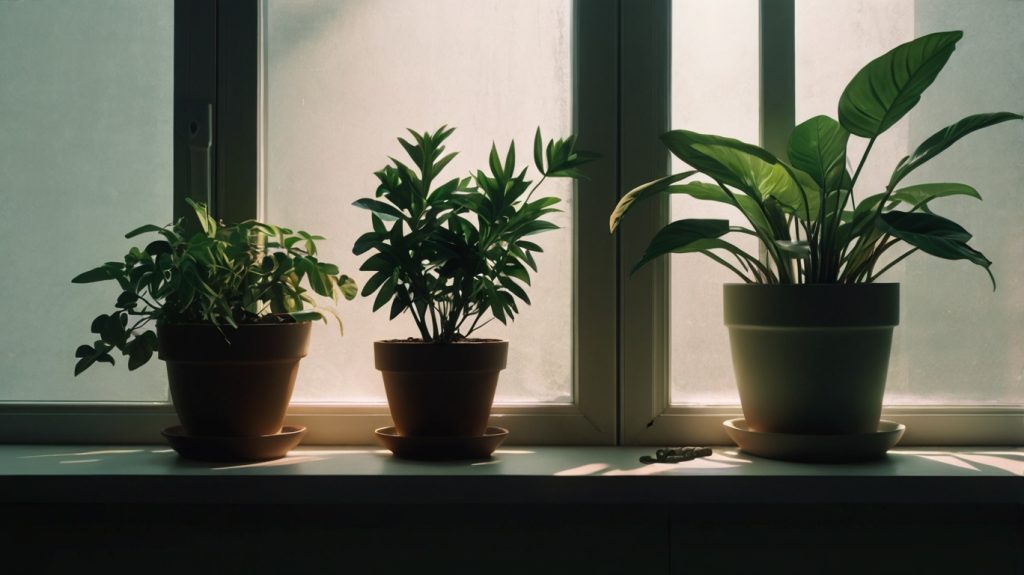
Here’s where many beginners go wrong: assuming plants can live anywhere. Spoiler alert—they can’t. That peace lily shoved into the dark bathroom corner with no window? Yeah… it’s plotting its escape.
Light is literally plant food. Without enough of it, your plants get weak, leggy, and sad-looking. Too much direct sun, on the other hand, and you’ll end up with crispy leaves that look like they’ve been through a desert apocalypse.
The solution? Match the plant to the light you actually have. Got a bright, south-facing window? Perfect for succulents, cacti, and sun-loving herbs. Shadier room? Go with snake plants, ZZ plants, or pothos.
If your home is light-challenged, don’t panic. Grow lights are cheap, easy, and a total game-changer. Just think of them as Netflix for plants—artificial, but surprisingly satisfying.
And don’t forget the rotation trick: turn your plants every week or two so they grow evenly. Otherwise, you’ll end up with the Leaning Tower of Monstera, which, while hilarious, is not exactly Instagram-worthy.
Choosing Difficult Plants as a Beginner
Imagine learning to drive by starting with a Formula 1 car. Sounds exciting but… you’ll probably crash. The same logic applies to indoor gardening. Picking fussy plants as a beginner is like setting yourself up for heartbreak.
Some plants are divas. Orchids, bonsai trees, and fiddle-leaf figs, for example, are gorgeous but demand constant attention. They’re sensitive about water, light, humidity—you name it. If you’re just starting out, they’ll frustrate you faster than a slow Wi-Fi connection.
Instead, start with low-maintenance champions: pothos, snake plants, spider plants, or succulents. These guys are like the chill friends who don’t mind if you forget their birthday. They’ll survive your mistakes and reward you with steady growth, building your confidence.
Once you’ve mastered the basics, then you can upgrade to the divas. By that point, you’ll know how to read plant signals and won’t panic the moment a leaf turns yellow.
Bottom line: let your first plants be your teachers, not your enemies. Save the “challenge plants” for later when you’ve got your green thumbs properly warmed up.
Ignoring Pests or Plant Diseases
Here’s the part nobody likes to talk about: sometimes, your plants attract uninvited guests. Spider mites, gnats, aphids—they’re the freeloaders of the plant world. Left unchecked, they multiply faster than rabbits and can turn your thriving plant into a sad skeleton.
The good news is, pests are usually easy to spot if you pay attention. Look for tiny webs, sticky residue on leaves, or little bugs flying around the soil. Catch them early, and a simple spray of insecticidal soap, neem oil, or even a good rinse in the shower can fix things.
Diseases are trickier, but most are caused by—you guessed it—overwatering. Fungal problems like root rot or powdery mildew thrive in soggy conditions. Keeping your watering habits in check and ensuring good airflow around your plants is the best prevention.
And here’s the golden rule: quarantine new plants. I know, it sounds dramatic, but placing a new plant away from your others for a couple of weeks ensures you’re not accidentally introducing pests into your entire collection. Think of it like plant dating—you don’t let them meet the family until you know they’re not bringing drama.
Stay observant, and you’ll catch problems before they get out of control. Your plants will thank you by living long, happy lives—and you’ll avoid the heartbreak of losing your favorite green buddy to something that could’ve been fixed.
Final Thoughts: Building Your Own Indoor Oasis
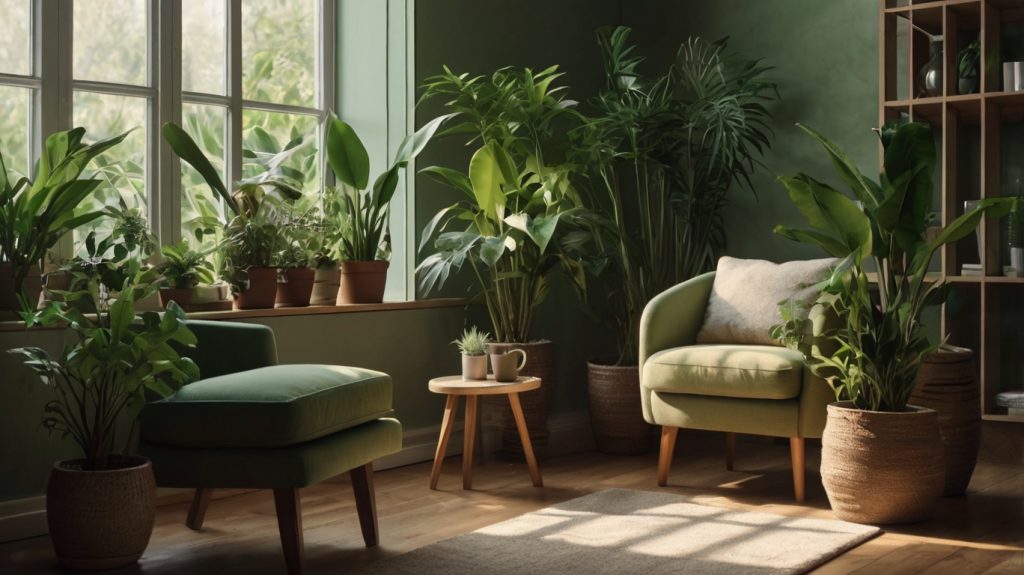
So here you are—after exploring what indoor gardening really means, drooling over its health, mental, and environmental benefits, getting inspired with creative ideas, arming yourself with beginner tips, and dodging the classic mistakes—what’s next? Simple: it’s time to roll up those sleeves (yes, even if they’re pajama sleeves) and start building your own indoor oasis.
The beauty of indoor gardening is that it’s not about size, budget, or expertise—it’s about connection. Connection to nature, to yourself, and even to your living space. When you nurture a plant, you’re doing more than keeping something alive; you’re cultivating patience, mindfulness, and a sense of responsibility. That’s some next-level self-growth, if you ask me.
Now, let’s be real: your indoor garden doesn’t need to look like a Pinterest board gone wild. Maybe it starts with one plant sitting proudly on your desk. Maybe it’s a little herb pot in your kitchen that adds a fresh kick to your pasta. Maybe it’s a corner in your living room filled with leafy green roommates that never argue over the remote. However you begin, the key is to enjoy the process—not chase perfection.
Think of indoor gardening as a journey of small victories. The first time you notice a new leaf, the day your basil actually makes it into your homemade pizza, or the moment you realize your apartment feels fresher just because of a spider plant in the corner—that’s the magic. And trust me, those little wins are way more satisfying than you’d expect.
And here’s the fun part: your indoor garden will grow with you. Start simple, learn as you go, and over time, you’ll find yourself experimenting—trying out rare houseplants, designing cool vertical gardens, maybe even gifting cuttings to friends (because yes, plant people are the best kind of people). Before you know it, you’ll look around and realize your home doesn’t just feel like a place you live—it feels like a sanctuary.
So, whether you’re a total newbie who still googles “how often do I water succulents?” (don’t worry, we’ve all been there) or someone who’s ready to turn their apartment into a lush green paradise, the journey is yours to create. Every plant you nurture adds life, beauty, and calm to your world. And honestly, in today’s fast-paced, tech-heavy lifestyle, who couldn’t use a little more of that?
Start with one plant. Name it if you want. Talk to it (don’t worry, it won’t judge). Let your indoor garden be your daily reminder that growth—both yours and your plants’—takes time, care, and a whole lot of light (literally and metaphorically).
So go ahead, future plant parent—your indoor oasis is waiting. 🌱✨
FAQs
If you’re just dipping your toes (or thumbs) into indoor gardening, herbs are hands-down the easiest win. Think basil, mint, parsley, or chives. They’re forgiving, don’t need fancy soil, and grow happily on a sunny windowsill. Bonus: they make you feel like a gourmet chef when you casually pluck fresh basil for your pasta. Other beginner-friendly options include pothos (a houseplant that basically thrives on being ignored) and succulents (just don’t water them to death).
Start simple. Herbs like basil, thyme, and mint are a solid choice, while leafy greens like lettuce and spinach grow quickly and reward you with edible results. For pure decorative joy, spider plants, snake plants, and peace lilies are nearly indestructible and perfect for beginners. In short: pick plants that don’t need you to quit your job and become a full-time plant nanny.
Yes, but with a little help. Vegetables like lettuce, spinach, radishes, and microgreens are super indoor-friendly year-round, especially if you have a sunny spot or use grow lights. Tomatoes, peppers, and cucumbers can also thrive indoors, but they need more space and light. So yes, you can have “indoor farm vibes,” but be prepared to invest in proper lighting if you want a year-round harvest.
Absolutely, but fair warning—they’ll need more space than your average houseplant. Potatoes can be grown indoors in large containers or even grow bags. Just make sure they get enough light (grow lights help here), and remember that potatoes like deep soil to spread out. The fun part? Digging into your indoor soil like a treasure hunt when harvest time comes.
Yes—and actually, starting cucumbers indoors is a great idea, especially if you live in a cooler climate. Plant the seeds in small pots a few weeks before your growing season begins. Once they sprout, you can either keep them inside with proper lighting and support or move them outdoors when it warms up. Indoor cucumbers are a little high-maintenance, though, so be ready for some extra TLC.
That depends on your style (and budget). For beginners, a simple windowsill with pots or mason jars is more than enough. But if you’re serious about year-round indoor farming, hydroponic systems (like AeroGarden or Rise Gardens) are game-changers. They provide automated watering, lighting, and nutrients—basically gardening on “easy mode.” It’s like having a plant butler.
Here’s the golden rule: water when the top inch of soil feels dry, not when your gut tells you to. Overwatering is the most common rookie mistake. Most indoor veggies like consistent, moderate moisture—not swampy soil. A good trick is to stick your finger in the soil; if it feels dry up to your first knuckle, it’s watering time. Simple, effective, and finger-approved.
